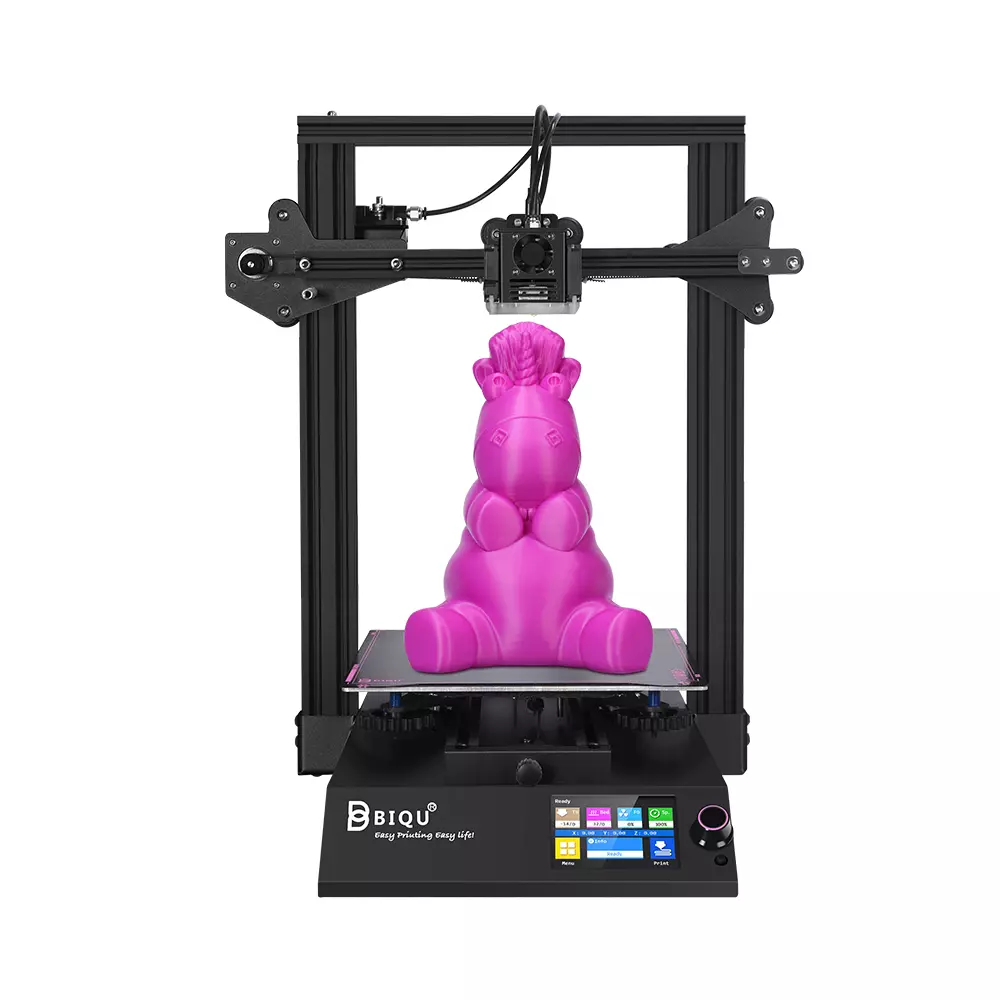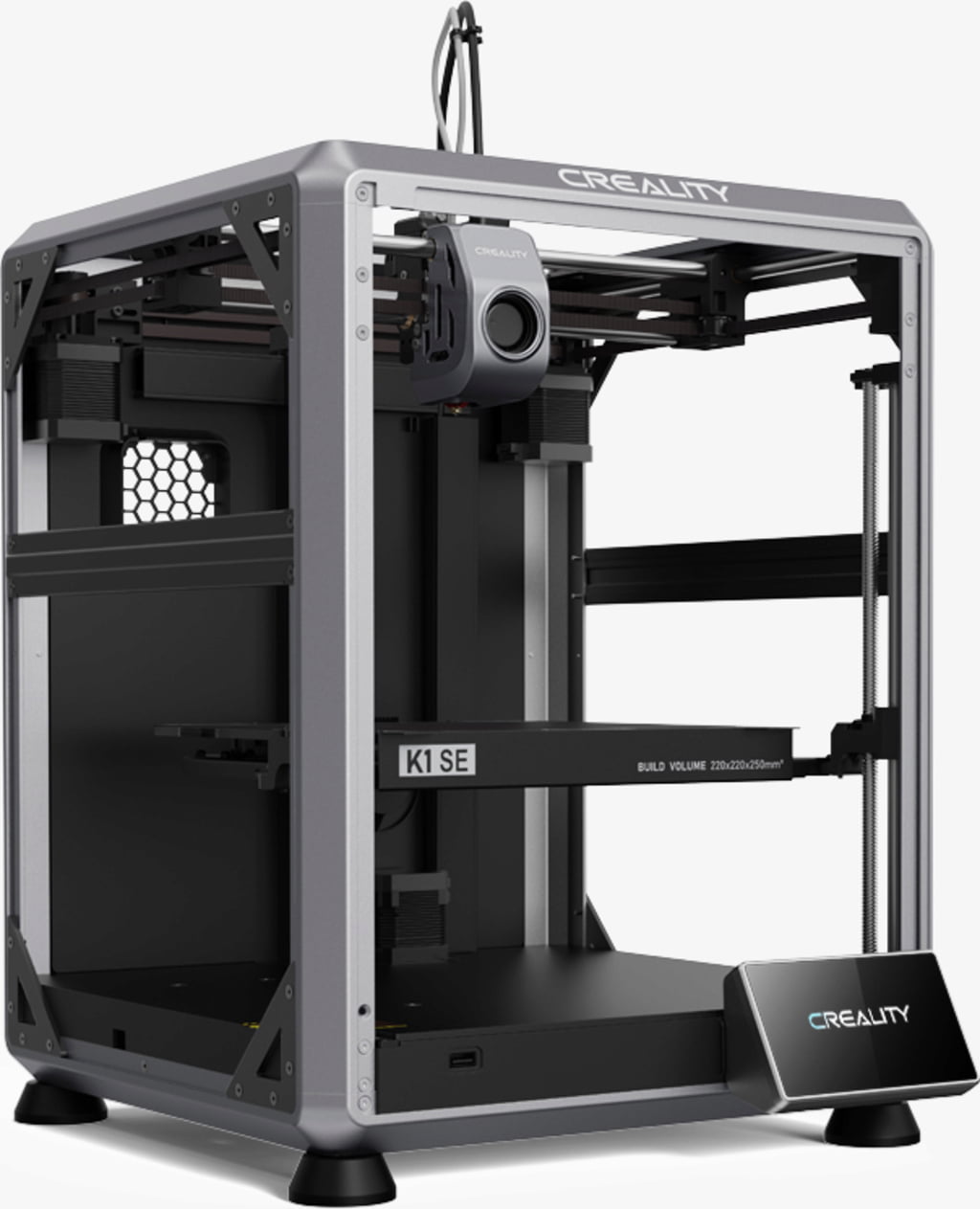Compare BIQU B1 vs K1 SE
Comparison between the best 3D printers
Choose the best 3D printer at the best price. The cheapest 3D printers are here.
Buy a 3D printer here with 3D Fila.
 |
 |
|
| Model | BIQU B1 |
K1 SE |
| Printing Material | Filament | Filament |
| Buy Filament for BigTreeTech BIQU B1 | Buy Filament forCreality 3D K1 SE | |
| Estimated price | $269,00 | $349,00 |
| Manufacturer | BigTreeTech | Creality 3D |
| Release Year | 2020 | 2023 |
| Print Volume [mm] | 235x235x270 | 220x220x250 |
| Printer Size [mm] | 412x402x492 | 355x355x480 |
| Weight [kg] | 8,00 | 10,24 |
| Power Loss Recovery | YES | YES |
| Enclosed printer | NO | NO |
| Bed Leveling | Manual | Automatic |
| Filament End Sensor | YES | YES |
| Bed type | Heated | Heated |
| Power supply system | Bowden | Direct Drive |
| Standard nozzle | 0,4 | 0,4 |
| Maximum Nozzle Temperature [°C] | 250 | 300 |
| Maximum Bed Temperature [°C] | 100 | 100 |
| Maximum printing speed [mm/s] | 100 | 600 |
| Filament holder | YES | YES |
| Camera for supervision | NO | NO |
| Recommended filaments | PLA, TPU, ABS, PETG | Hyper PLA, PLA, PETG, PET, TPU |
| Recommended slicers | Cura, Simplify, Slic3r | Creality Print; Cura, Simplify3D e PrusaSlicer |
| Maximum Resolution [mm] | 0,1 | 0,1 |
| Processor | 32 Bits BTT SKR V 1.4 | |
| Display | Touchscreen TFT 3,5'' | Display touchscreen 4,3'' |
| Power Supply | 24V / 360W | 110/220V / 350W |
| Connectivity | SD / USB | Ethernet / USB / Wi-Fi |
| Operating systems | Windows, Mac, Linux | Windows, Mac, Linux |
| Date of registration in the system | 2021-04-14 | 2023-08-26 |
| Release date | 2020 | 2023 |
| Extra features | The BIQU B1 is an advanced 3D printer with a silent 32-bit BTT SKR V1.4 motherboard and ARM Cortex-M3 CPU, offering DIY interfaces (I2C, SPI, WiFi) and dual Z-axis. Its dual BTT B1 TFT35 V3.0 operating system allows real-time monitoring and multiple printing modes, including G-code visualization effects. It stands out for its BIQU SSS (Super Spring Steel), ensuring easy model adhesion and simplified removal, with the possibility of using it on both sides. It includes a filament sensor, automatically pausing printing in case of filament breakage. The multicolored RGB lights integrated into the hotend allow you to view the printing status even at night. Additional notes include the need for a BIQU-specific Type-C cable and extra interfaces for smart filament sensor and BL Touch. | The Creality K1 SE is a high-speed 3D printer with CoreXY system, capable of printing at up to 600mm/s with acceleration of 20000mm/s². It has a dual-gear extruder, easy-to-replace tri-metal nozzle, automatic leveling, and advanced features such as vibration reduction algorithms and intelligent operation. Its rigid cast aluminum frame ensures stability, while the open-source Klipper-based system offers freedom for customization. It is pre-assembled for a simplified and fast user experience. |
| Support for multiple colors and materials (AMS and CFS) | NO | NO |
Notes * |
||
| Cost-benefit | 7 / 10 | 7 / 10 |
| Hardware | 2 / 10 | 4 / 10 |
| Tela | . | . |
| Print volume | 3 / 10 | 3 / 10 |
| Performance | 1 / 10 | 5 / 10 |
Conclusion |
| In comparing the BIQU B1 and the Creality K1 SE, key differences and features come into focus that can guide potential buyers based on their needs and budget. The BIQU B1, released in 2020, is an economical choice with a solid print volume and manual bed leveling. It excels in cost-effective filament compatibility and built-in features such as a filament end sensor and a silent motherboard. However, its maximum print speed is significantly lower compared to the K1 SE, and the hardware is not as advanced, resulting in a lower overall performance rating. On the other hand, the Creality K1 SE, launched in 2023, stands out for its impressive printing speed and performance. With automatic leveling and a dual-gear direct drive system, it caters to users seeking enhanced precision and efficiency. Notably, its rigid frame and advanced features like vibration reduction algorithms make it more suitable for high-speed operations and complex prints. Additionally, it offers more extensive connectivity options and support for customization. Ultimately, the choice between these two models boils down to what the user prioritizes—budget-conscious users and beginners might find the BIQU B1 suitable for standard 3D printing projects, while more experienced users looking for high performance and speed might lean towards the advanced capabilities of the Creality K1 SE. The slight increase in investment for the K1 SE is justified by its superior features and performance. Thus, for those willing to invest a bit more for enhanced performance and future potential, the Creality K1 SE is the preferable option. |

